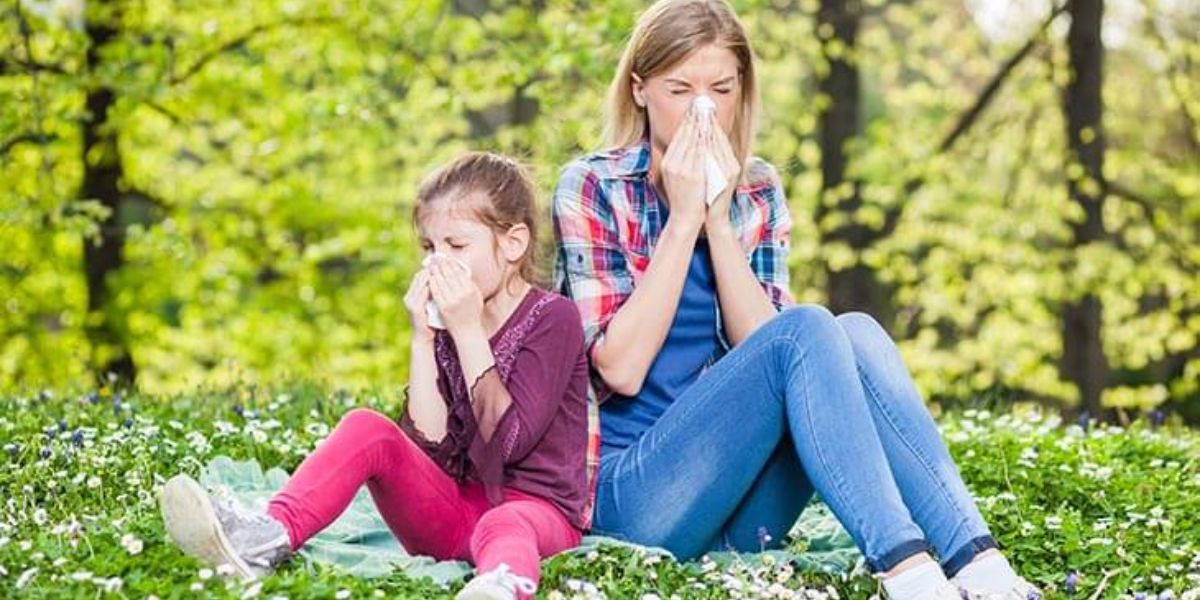Seasonal allergies affect thousands of residents across Madison County every year, especially during high-pollen months when trees, grasses, and weeds release allergens into the air. Sneezing, itchy eyes, congestion, and fatigue can make daily tasks difficult, but with the right primary care approach, most people can reduce symptoms and manage flare-ups more effectively. Understanding how allergies behave in our region — and what local triggers matter most — helps patients stay prepared throughout the year.
Understanding Common Allergy Triggers in Madison County
Madison County’s seasonal allergy patterns follow a predictable cycle, but the intensity can vary year to year. The most frequent triggers include:
Table of Contents
Tree Pollen in Early Spring
Tree pollen levels typically spike from March through May. Species such as oak, maple, birch, and hickory are major contributors. Many patients begin experiencing symptoms before they realise trees have already begun pollinating.
Grass Pollen During Late Spring and Summer
By late May through July, grass pollen becomes Madison County’s dominant allergen. People who spend time outdoors, especially on freshly mowed lawns, often notice stronger symptoms.
Ragweed and Weeds in Late Summer and Early Autumn
Ragweed is one of the most powerful allergens in the Midwest, peaking from August to October. Even short exposure can cause severe symptoms for sensitive individuals.
Being aware of these seasonal patterns allows people to plan preventive measures before symptoms begin.
Recognising Symptoms Before They Worsen
Many residents mistake seasonal allergy symptoms for a lingering cold or sinus infection. Primary care providers encourage patients to watch for patterns such as:
- Symptoms lasting more than 10 days
- Itchy or watery eyes
- Reactions that worsen outdoors or during specific months
- Symptoms improving indoors or after showering
Early recognition helps prevent unnecessary discomfort and limits overuse of antibiotics.
Primary Care Strategies for Effective Relief
Primary care professionals in Madison County offer a straightforward approach to managing allergies, starting with lifestyle adjustments and moving toward medication when needed.
Reduce Exposure to Seasonal Triggers
Small daily habits can significantly reduce contact with airborne allergens. Primary care clinicians commonly recommend:
- Keeping windows closed during high-pollen days
- Showering and changing clothes after being outdoors
- Using HEPA-filter air purifiers inside the home
These preventive steps help patients reduce the intensity of their symptoms before medications are even needed.
Over-the-Counter Medicines That Help
For mild to moderate symptoms, many OTC options provide relief:
- Antihistamines to reduce sneezing, itching, and runny nose
- Nasal corticosteroid sprays to control inflammation
- Decongestants for short-term relief from nasal blockage
Primary care providers advise checking with a clinician before combining medicines or taking them long term.
When Prescription Treatments Are Necessary
If OTC remedies are not effective, primary care clinicians may recommend:
- Prescription-strength nasal sprays
- Leukotriene inhibitors for asthma-related symptoms
- Short courses of oral steroids for severe flare-ups
These treatments are usually part of a broader, personalised allergy management plan.
How Climate and Air Quality Affect Local Allergy Seasons
Madison County has experienced shifts in seasonal pollen patterns in recent years due to warmer winters and increased humidity. Longer growing seasons mean allergens remain in the air for extended periods. Air quality alerts — especially on hot, stagnant days — can intensify symptoms. Local primary care professionals emphasise checking pollen forecasts and air-quality updates to reduce outdoor activity during high-risk periods.
The Importance of Primary Care Checkups During Allergy Season
While allergies may seem routine, they can also lead to complications if untreated. Chronic congestion can trigger sinus infections, while individuals with asthma can experience worsening breathing issues. Regular appointments allow clinicians to track symptom patterns, adjust medications, and rule out underlying conditions.
For patients with year-round symptoms, primary care evaluation also helps identify nonseasonal triggers such as dust mites, mould, or pet dander.
When to See a Specialist
Primary care clinicians may refer patients to an allergist if:
- Symptoms persist despite medication
- Breathing issues or wheezing occur
- Severe reactions impact work or school
- Skin testing is needed to confirm triggers
Collaborating with allergy specialists ensures patients receive the most comprehensive care possible.
Practical Everyday Tips for Madison County Residents
Residents can make small lifestyle changes to navigate allergy season more comfortably:
- Wash bedding regularly in hot water
- Use air conditioning instead of open windows
- Wear sunglasses outdoors to reduce eye irritation
- Check daily pollen counts through reliable health weather services
These simple practices can dramatically reduce symptom severity for many individuals.
Conclusion
Seasonal allergies in Madison County can significantly disrupt daily life, but primary care strategies offer effective relief. Understanding local triggers, recognising early symptoms, using appropriate medications, and maintaining preventive habits help residents stay comfortable throughout high-pollen months. With guidance from primary care professionals, most people can manage their symptoms confidently and keep flare-ups under control.
What do you think of this? Share your thoughts in the comments below on MCCHC.org.












